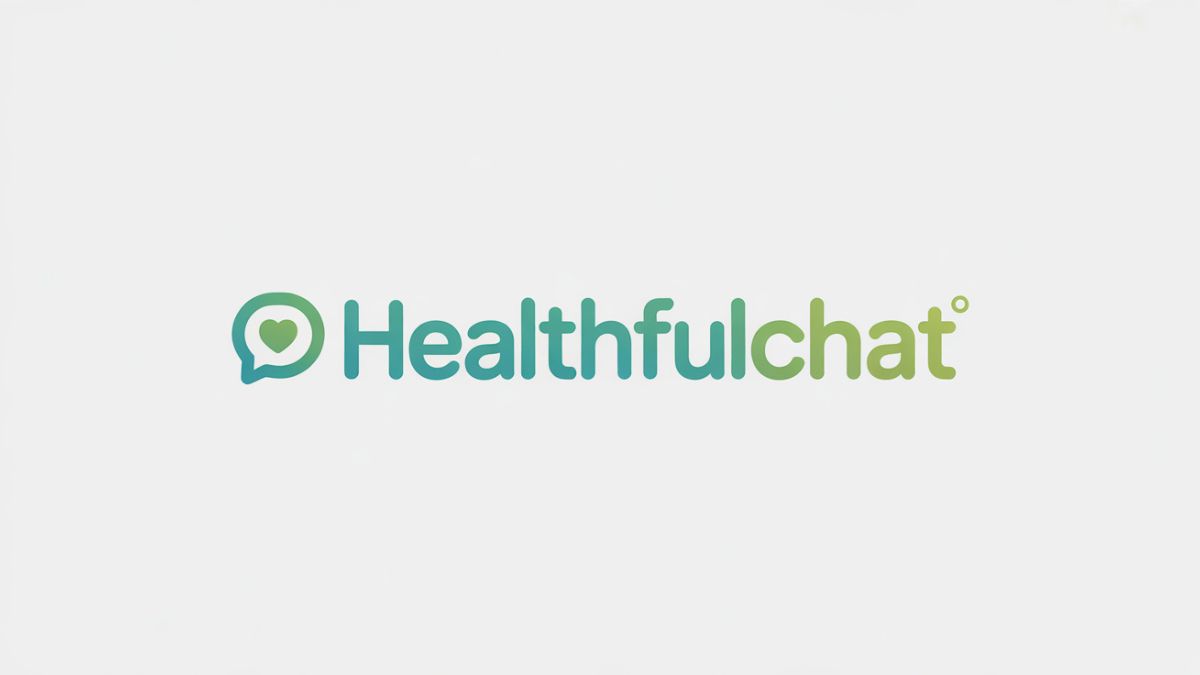In an era where digital tools increasingly shape how we learn, work, and care for ourselves, a new wave of technology is emerging to support holistic well-being — not just by tracking steps or calories, but by engaging us in meaningful, reflective conversations about our health. Enter HealthfulChat: an intelligent, conversational AI platform built specifically to empower individuals on their journey toward better mental, physical, and emotional wellness.
Unlike generic chatbots that offer scripted answers or impersonal advice, HealthfulChat is designed to listen, adapt, and respond with empathy and insight. It combines evidence-based health principles with the flexibility of natural language processing, creating a dynamic space where users can explore topics like stress management, sleep hygiene, nutrition habits, and even self-compassion — anytime, anywhere.
This article offers a deep dive into what makes HealthfulChat unique, how it works, who it serves, and why such a tool is not only timely but necessary in today’s fast-paced, digitally connected world. Whether you’re a health-conscious individual, a clinician seeking supplemental tools, or simply curious about the intersection of AI and well-being, this guide will help you understand the transformative potential of HealthfulChat.
The Rising Need for Accessible, Personalized Wellness Support
Before exploring how HealthfulChat functions, it’s essential to recognize why tools like it are gaining prominence.
The Global Mental Health Gap
According to the World Health Organization (WHO), nearly 1 in 8 people globally live with a mental health condition — and many go untreated due to stigma, cost, or lack of access to qualified professionals. Even in high-income countries, waitlists for therapy can stretch for months. Meanwhile, chronic stress, burnout, and lifestyle-related illnesses (e.g., type 2 diabetes, hypertension) continue to rise.
The Limitations of Traditional Health Apps
While mobile health apps have proliferated — from meditation guides to diet trackers — many suffer from low long-term engagement. Why? Because they tend to be directive, not dialogic. They tell users what to do: “Drink more water,” “Meditate for 10 minutes,” “Walk 10,000 steps.” But they rarely ask: How are you feeling today? What’s getting in the way? What matters most to you right now?
Human beings thrive on connection and context. We respond better to suggestions that feel tailored, respectful, and co-created — not prescribed.
Enter the Era of Conversational Health
Conversational AI — like voice assistants and messaging bots — has matured significantly. Advances in large language models (LLMs), sentiment analysis, and behavioral science integration now allow AI to simulate supportive, nonjudgmental dialogue. When guided by ethical design and clinical oversight, such systems can serve as low-barrier entry points to self-reflection, habit formation, and early intervention.
What Exactly Is HealthfulChat?
HealthfulChat is not a diagnosis tool, a therapy replacement, or a fitness coach in the conventional sense. Rather, it’s a wellness companion — an AI-powered conversational interface grounded in principles of positive psychology, motivational interviewing, cognitive behavioral techniques, and health literacy.
Think of it as a patient, curious friend who’s also well-read in science-backed wellness strategies. It doesn’t lecture. It asks open-ended questions. It notices patterns in your responses (with your permission). It celebrates small wins and gently challenges unhelpful thinking — all while maintaining strict privacy and ethical boundaries.
Core Design Principles
- User-Centered & Non-Directive
HealthfulChat avoids prescriptive advice. Instead, it uses reflective listening techniques (e.g., “It sounds like you’re feeling overwhelmed by your schedule — is that fair?”) to help users clarify their own goals and values. - Evidence-Informed
Every suggestion, resource, or reflection prompt is reviewed against current guidelines from authoritative sources: the American Psychological Association, CDC, WHO, and peer-reviewed journals in behavioral medicine. - Adaptive Over Time
With consent, HealthfulChat learns from longitudinal patterns — not to predict behavior, but to tailor timing, tone, and topic relevance. For instance, if a user consistently reports low energy on Mondays, it might gently explore weekend routines or sleep quality — without assuming causation. - Transparent & Empowering
Users are always informed about data use. There are no hidden algorithms or dark patterns. HealthfulChat explains why it’s asking a question (“I’m curious about your sleep because rest affects mood and focus — would you be open to exploring that?”). - Safely Guardrailed
If a user expresses thoughts of self-harm or acute crisis, HealthfulChat immediately disengages its conversational mode and provides validated crisis resources (e.g., national hotlines, text lines, emergency contacts) — never attempting to “handle” high-risk situations beyond its scope.
At its heart, HealthfulChat is built to meet people where they are — whether that’s a place of curiosity, resistance, motivation, or fatigue.
How Does HealthfulChat Work? A Walkthrough of the Experience
Let’s imagine a first-time user, “Alex,” opens the HealthfulChat app on a Tuesday evening after a stressful workday.
Step 1: Warm, Low-Pressure Onboarding
Instead of a long questionnaire, Alex is greeted with:
“Hi there. I’m here to chat about anything related to your well-being — no judgment, no agenda. Would you like to talk about something on your mind today… or just check in?”
Alex selects “Just check in.” HealthfulChat responds:
“Got it. How’s your energy level right now — on a scale from ‘drained’ to ‘recharged’? And no need to justify — just whatever feels true.”
This small choice affirms autonomy. There’s no “right” answer.
Step 2: Contextual Exploration
Alex says: “Pretty drained. Work was intense, and I skipped lunch.”
HealthfulChat doesn’t jump to solutions. Instead, it reflects and explores:
“Skipping meals when things get hectic is really common — and your body might be signaling it needs fuel and rest. When you say ‘intense,’ what made today stand out?”
Now the conversation deepens — not toward problem-solving, but understanding.
Step 3: Co-Creation of Micro-Actions
Later, if Alex expresses interest in feeling more balanced, HealthfulChat might ask:
“If you could add one tiny thing this week to support your well-being — something so small it feels almost too easy — what might that be?”
Options aren’t listed. The user generates their own idea (e.g., “Set a phone alarm to drink water at 3 PM”). HealthfulChat then helps refine it into a SMART-ish (Specific, Meaningful, Achievable, Relevant, Time-bound) intention — without using jargon.
Step 4: Gentle Follow-Up & Reflection
Two days later, HealthfulChat checks in:
“Hey Alex — no pressure, but I remember you mentioned wanting to try that 3 PM water break. Did it happen? Either way — what did you notice?”
Crucially, not doing it is treated as neutral data — not failure. “Interesting — what got in the way? That’s useful info for planning next time.”
This iterative, compassionate loop fosters self-awareness and self-efficacy — two pillars of lasting behavior change.
Key Features That Set HealthfulChat Apart
While many wellness apps share surface similarities, HealthfulChat distinguishes itself through intentional design and ethical rigor.
1. Dynamic Topic Navigation
Users aren’t forced into modules (“Week 1: Mindfulness; Week 2: Nutrition”). Instead, conversations organically shift based on user input. A chat about insomnia might lead to exploring caffeine timing, screen use, or emotional processing — and HealthfulChat seamlessly transitions between domains.
2. “Pause & Reflect” Prompts
Embedded in conversations are optional reflective pauses:
“Before we go further — take 10 seconds to notice your breath. No need to change it. Just feel it.”
These micro-mindfulness moments help anchor users in the present and reduce autopilot reactivity.
3. Personalized Resource Curation
Rather than overwhelming users with links, HealthfulChat offers just-in-time, vetted resources:
- A 4-minute breathing exercise (if stress is high)
- A 2-paragraph explainer on sleep pressure (if fatigue is chronic)
- A printable “values compass” worksheet (if goal-setting feels hollow)
All resources include attribution and readability scores (e.g., “Written at a 7th-grade level”).
4. Collaborative Journaling
HealthfulChat can summarize key insights from past chats into private, user-editable journal entries:
“You’ve mentioned three times this month that evenings feel rushed. Common themes: wanting more transition time, and guilt about ‘unproductive’ rest. Want to explore what ‘rest without guilt’ could look like?”
This turns fleeting conversations into actionable self-knowledge.
5. Clinician-Ready Summaries (Opt-In)
For users working with therapists, coaches, or physicians, HealthfulChat can generate anonymized, consent-based progress snapshots — not raw transcripts — to support continuity of care. Example:
“User has engaged in 12 wellness chats over 4 weeks. Themes: boundary-setting at work, reducing evening screen time, identifying early stress signals. Self-rated confidence in managing overwhelm rose from 3/10 to 6/10.”
Note: HealthfulChat never shares data without explicit, granular permission.
Who Benefits from Using HealthfulChat?
While designed for broad accessibility, certain groups may find HealthfulChat especially valuable.
1. The “Pre-Contemplative” Individual
Many people know they should prioritize health but feel stuck, unmotivated, or skeptical of generic advice. HealthfulChat meets them with curiosity, not pressure — lowering the activation energy to begin.
2. High-Achievers & Burnout-Prone Professionals
People in demanding careers often deprioritize self-care until crisis hits. HealthfulChat’s non-intrusive check-ins (“How’s your recovery time stacking up against your output time?”) can serve as early warning systems.
3. Caregivers & Parents
Those caring for others frequently neglect their own needs. HealthfulChat offers guilt-free micro-reflections:
“You mentioned your child had a tough night. How did you replenish afterward — even for 5 minutes?”
4. Individuals in Therapy (as a Complement)
Between sessions, progress can stall. HealthfulChat acts as a “holding space” for practicing skills, noticing patterns, and preparing topics for therapy — enhancing therapeutic alliance.
5. Health Coaches & Educators
Professionals can use HealthfulChat (in guided or white-label modes) to extend their impact. For example, assign a weekly reflection prompt via HealthfulChat and review insights in session.
Importantly, HealthfulChat is designed with inclusivity in mind:
- Language options, including simplified phrasing
- Voice-to-text and text-to-speech support
- Culturally responsive examples (avoiding assumptions about family structure, diet, or work norms)
- Trauma-informed framing (e.g., “Would you feel safe exploring that further — or would you prefer to pause?”)
The Science Behind the Conversation
HealthfulChat isn’t built on tech alone — it’s rooted in decades of behavioral science.
Motivational Interviewing (MI)
MI is a counseling method that helps people resolve ambivalence and find their own reasons for change. HealthfulChat uses core MI skills:
- Open-ended questions (“What would make a difference for you?”)
- Affirmations (“You clearly care deeply about your family’s well-being.”)
- Reflective listening (“So part of you wants to move more… and part of you feels too tired to start.”)
- Summarizing (“Let me see if I’ve got this…”)
Studies show MI increases engagement and sustainment in health behaviors — especially when delivered consistently.
Cognitive Behavioral Principles
HealthfulChat gently surfaces cognitive distortions — not to correct, but to examine:
“You said, ‘I failed because I ate dessert.’ I’m curious — would you say a friend ‘failed’ for enjoying a treat?”
This fosters self-compassion, a key predictor of resilience.
Self-Determination Theory (SDT)
SDT posits that motivation thrives when three needs are met: autonomy, competence, and relatedness. HealthfulChat supports all three:
- Autonomy: “What feels most important to you?”
- Competence: Celebrating effort (“You noticed your stress rising — that’s a real skill.”)
- Relatedness: Using warm, human-centered language (“I’m glad you shared that.”)
Habit Formation & Implementation Intentions
Rather than vague goals (“Exercise more”), HealthfulChat helps craft if-then plans:
“If it’s 7 AM and my alarm goes off, then I’ll put on my walking shoes before checking my phone.”
Research shows such plans double success rates.
All these frameworks are woven invisibly into dialogue — making science feel like conversation.
Ethical Considerations and Responsible AI
A tool like HealthfulChat carries profound responsibility. Its developers have embedded multiple safeguards:
✅ No Diagnostic Claims
HealthfulChat never labels conditions (e.g., “You have anxiety”). It discusses experiences (“You’ve described feeling on edge and restless — that sounds exhausting”).
✅ Data Minimization
Only essential data is stored — and users can delete their history anytime. No biometrics, location, or contact lists are accessed.
✅ Bias Mitigation
Training data is audited for representation across gender, race, age, and socioeconomic status. Regular third-party fairness assessments are conducted.
✅ Human Oversight Loop
A clinical advisory board (including psychologists, dietitians, and community health workers) reviews conversational pathways quarterly.
✅ Clear Boundaries
Every session begins with a scope statement:
“I’m here to support your well-being journey — but I’m not a substitute for professional care. If things feel overwhelming, I’ll help you find human support.”
Transparency builds trust — and trust is the bedrock of any health intervention.
The Future of HealthfulChat: What’s Next?
The team behind HealthfulChat envisions an evolving ecosystem:
- Integration with Wearables (Opt-In)
Syncing with devices (e.g., sleep data from a tracker) to ground conversations in real-world signals — only if the user initiates and controls the flow. - Group Wellness Circles
Facilitated small-group chats where HealthfulChat poses prompts and ensures respectful dialogue — fostering peer connection. - Community Health Partnerships
Deploying HealthfulChat in clinics, schools, and workplaces — customized to local needs (e.g., diabetes prevention in high-risk communities). - Multilingual Expansion with Cultural Localization
Not just translation, but adaptation: idioms, values, family dynamics, and food examples relevant to each region.
Above all, the guiding principle remains: augment human care, never replace it.
Why HealthfulChat Matters — Now More Than Ever
We live in a paradox: hyper-connected yet deeply lonely; information-rich yet wisdom-poor; productivity-obsessed yet exhausted.
Tools like HealthfulChat don’t promise quick fixes or miracle cures. Instead, they offer something more sustainable: a consistent, kind presence that helps us reconnect with ourselves — our needs, our boundaries, our resilience.
In a world of notifications demanding attention, HealthfulChat dares to ask:
“What do you need right now?”
And then — it listens.
That act of listening, mirrored back with care and curiosity, can be the first step toward real change.
Whether you’re looking to sleep better, manage stress, build confidence, or simply feel less alone in your wellness journey, HealthfulChat stands ready — not as an expert on high, but as a companion on the path.












